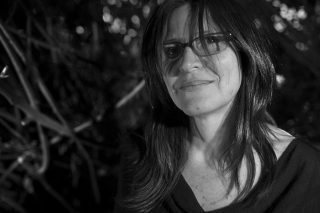English translation below.
Estoy escribiendo desde la sala, con mis pies ya en tierra firme, pero el cerebro sigue allá recreando el movimiento del R/V Falkor. Es un ligero vaivén que anuncia una nostalgia por el cosmos interior. No contaré los días que estuve a bordo, ya que pueden sonar muchos, pocos o un suspiro, si se compara con un tiempo geológico. Sé que cada día se irá sumando el deseo de regresar y que es incontable el agradecimiento que siento por cada instante de esta experiencia, por la amabilidad de todos, al compartir los conocimientos, la curiosidad y el asombro.
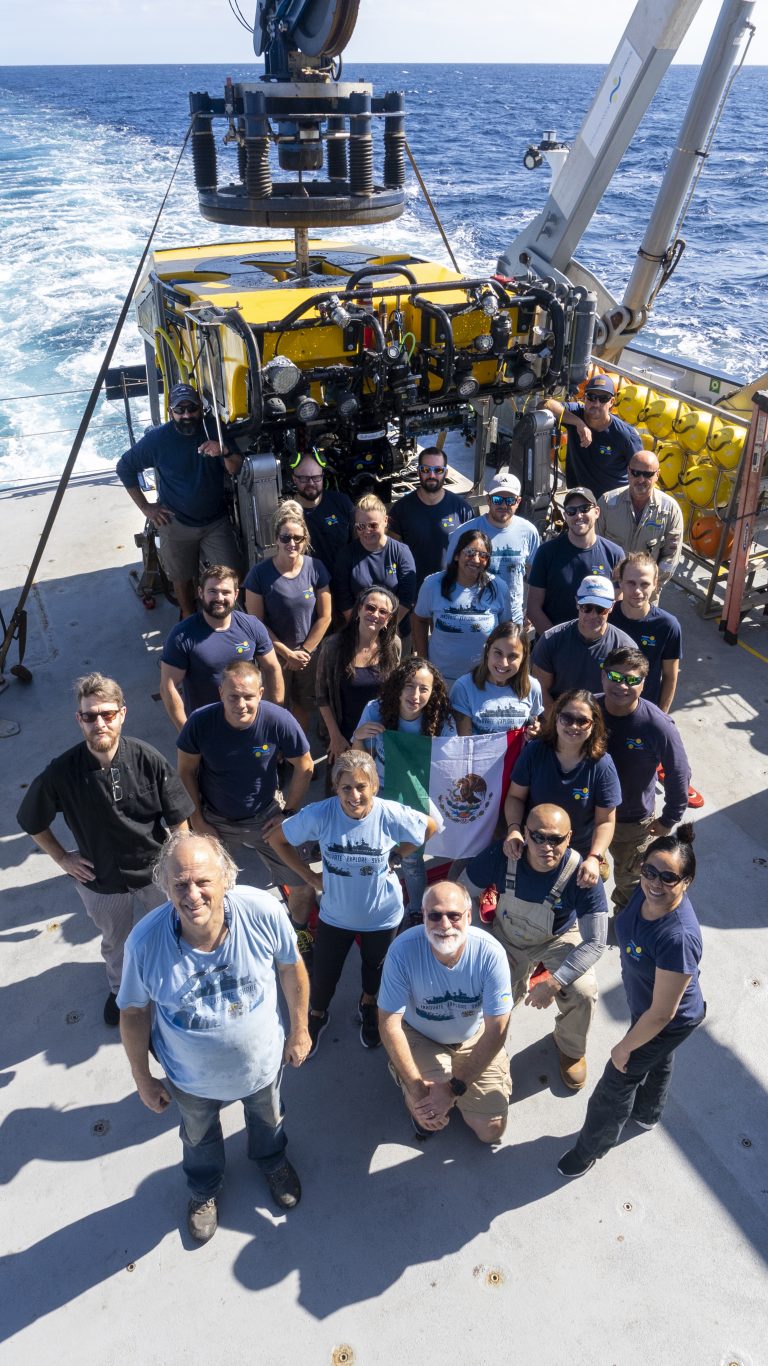
Visitamos chimeneas hidrotermales y sus alrededores. SuBastian nos dice que cerca de 3700 metros de profundidad el ambiente está alrededor de 2ºC, pero el agua de la chimenea hidrotermal fluye a más de 180ºC. Y ahí sucede igual que en el invierno de las altas montañas, alrededor del calor la vida se reúne.
Este living room no tiene muros ni división alguna; el área de reunión se dispersa alrededor de la chimenea. La temperatura cálida no está en el agua ni en el medio ambiente. Se encuentra en el lecho marino como un calentador de piso, produciendo energía que no proviene del Sol sino desde el corazón del planeta.
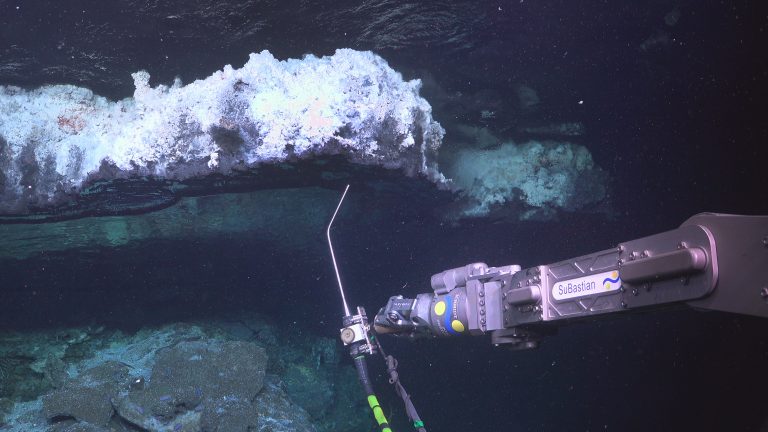
Al tomar el flujo de calor del fondo oceánico en un patrón organizado, estudiando estos datos quizá tengamos pistas sobre cómo corre el agua que escapa por las chimeneas hidrotermales. Además de aprender algo sobre lo que está sucediendo más allá del límite de profundidad. Cada chimenea es un poro más por donde exhala la Tierra, generando condiciones para nutrir a los seres biológicos que encontramos ahí abajo. Viven a oscuras, los vemos porque los iluminamos y algunos de ellos se acercan a SuBastian. Son ciegos, es la luz lo que les llama la atención, un calor que no proviene del suelo. Quizá es la primera vez que algunos de ellos sienten la luz.
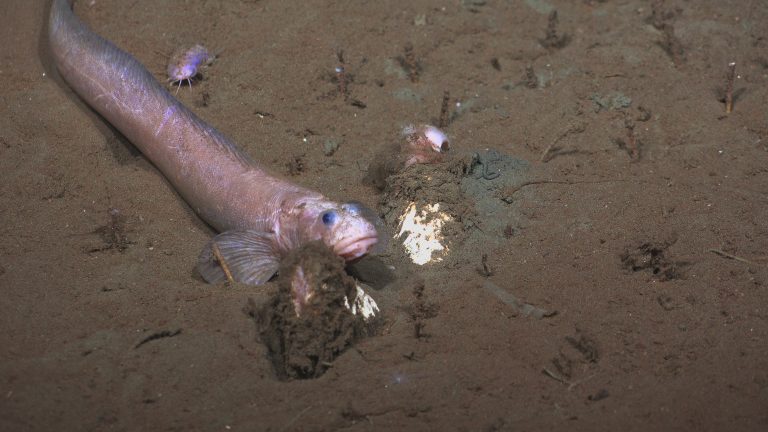
La chimenea hidrotermal es el centro y alrededor de ella en la oscuridad y en el silencio se guarda su historia. Los científicos en esta expedición estudian su formación, temperaturas, sus rocas y la vida que las rodea; obtienen datos y muestras, y observan en detalle para descifrarlas.
Tomar el flujo de calor del lecho marino implica pinchar el sedimento, insertar una sonda, quedarse inmóvil y esperar mas o menos siete minutos, dejar que tiempo corra lento. Solo podemos mover los ojos, observando lo que tenemos alrededor, haciendo un zoom, echando un vistazo a lo que sucede sutilmente ahí cuando no estamos.
Las chimeneas no son solo un centro de calor; también da forma al paisaje, construyéndolo lentamente a través de los minerales que trae el agua consigo del subsuelo marino. Conforme el agua fluye, va creando su camino, forma cristales, castillos subamarinos que se derrumban y forman cuevas con espejos ocultos, donde nunca alcanzaremos a ver nuestro reflejo.
Hay campos donde las almejas dibujan al caminar. Existen áreas tapizadas por pepinos de mar y sus excrementos en espiral, por donde uno que otro cangrejo camina y algunas anémonas pasean habitando sobre la concha de una almeja. Hay muchos seres más, muchos de ellos microorganismos, inalcanzables a nuestra vista.
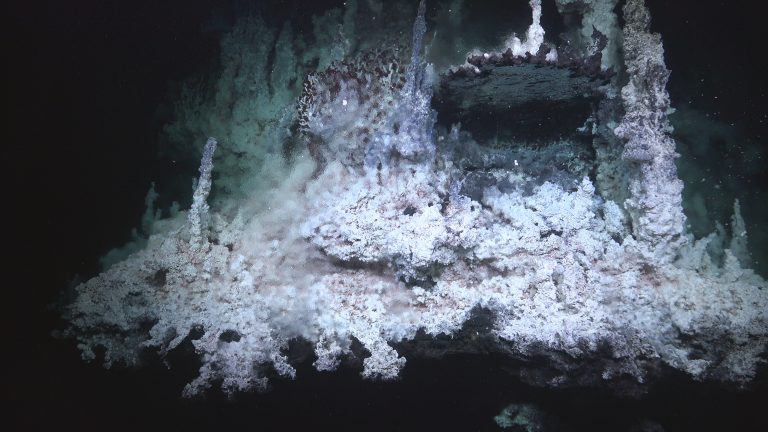
En está, la última expedición del R/V Falkor, bastaron unas cuantas semanas para obtener múltiples datos, diversidad de muestras, imágenes y videos; generar emociones y crear memorias. Tardaremos mucho tiempo más en procesarlos.
En los meses por seguir los científicos ya en tierra firme, estudiaran los datos y las muestras. En sus laboratorios, tendrán el tiempo para analizar los resultados y contarnos su historia.
Por mi parte, trabajaré con las imágenes, videos, las memorias, y las emociones. En el estudio tendré tiempo para significarlos, encontrar su poética y contar otra historia.
Cuando la tripulación llegue a tierra, llevará consigo las memorias de esta última expedición R / V Falkor. Y quiero imaginar que cada uno de nosotros, una noche fria frente al fuego, recordara ese cosmos y suspirará. Al mismo tiempo, allá en las profundidades del Golfo de California, la Tierra estará suspirando en silencio, en la oscuridad, propiciando la vida.
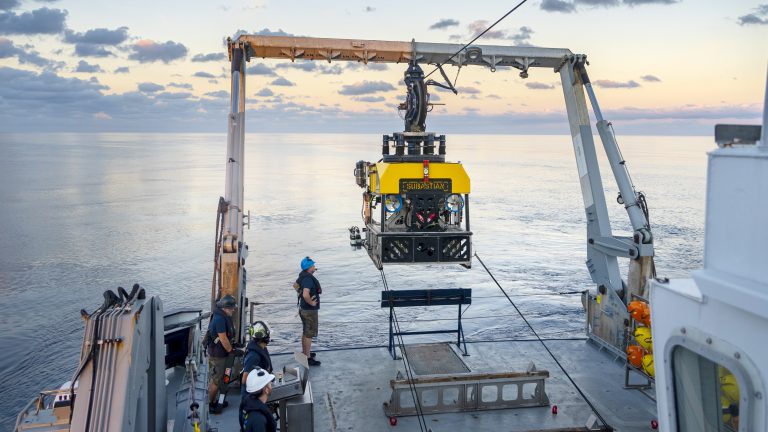
Living Room
I am writing in the living room when my feet are already on solid ground, but the brain is still there, recreating the movement of the R / V Falkor. It is a slight sway that announces nostalgia for the inner cosmos. I will not count the days on board since it may sound many, few, or just a sigh compared to geological time. It is uncountable the gratefulness I feel for every instant of this experience, for the kindness from everyone, for the sharing knowledge and curiosity.
I will only count the days to return.

We visit hydrothermal vents and their surroundings. SuBastian told us that about 3700 meters deep, the environment was around 2ºC, but the water from the hydrothermal vent flows at more than 180ºC. And there it happens, just like in the winter of the high mountains, around the chimney, life gathers.
This living room has no walls or any division; the meeting area is scattered around the heat. The warm temperature is not in the water nor in the environment itself. It is on the seabed as a floor heater, producing energy that does not come from the Sun but from the planet’s heart.

By taking the heat flow of the ocean floor in an organized pattern, we can study this data, and it can give us clues about how the water that escapes in the hydrothermal vents runs beneath. Also, we may learn something about what is happening beyond the depth limit. Each vent is one more pore through which the Earth exhales, generating conditions to nourish the biological beings that we find down there. They live in the dark. We see them because we illuminate them, and some of them approach SuBastian. They are blind; the light catches their attention. It is a heat that does not come from the ground. Perhaps it is the first time that some of them feel the light.

The hydrothermal vent is the center, and around it, in darkness and silence, its history is kept. The scientists in this expedition study their formation, temperatures, rocks, and the life surrounding them; they obtain data and samples and observe in detail to decipher them.
Taking the heat flow of the seabed involves puncturing the sediment, inserting a probe, staying still, and waiting for about 7 minutes, where life runs slowly. We can only move our eyes, observe what we have around us, zoom in, and look at what subtly happens there when we are not.

The vents are not only a center of heat; they also shape the landscape, slowly building it through the minerals that the water brings with it from beneath the seabed. As the water flows, it creates its path, forms crystals and underwater castles that collapse, and form caves with hidden mirrors, where we will never be able to see our reflection.
There are fields where clams make drawings while walking. There are areas covered by sea cucumbers and their spiral excrements, where some crabs walk around, and some anemones take rides with the clams, inhabiting their shell. There are many other beings, many of them microorganisms, unreachable in our sight.
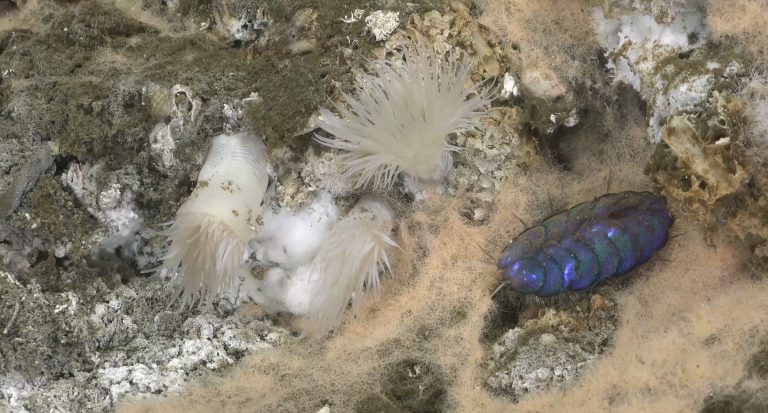 In this, the last expedition of the R / V Falkor, a few weeks were enough to obtain multiple data, diverse samples, images, and videos, generate emotions and create memories. In the months to follow, the science team already on land will study the data and samples. In their laboratories, they will have the time to process the results and tell us their story.
In this, the last expedition of the R / V Falkor, a few weeks were enough to obtain multiple data, diverse samples, images, and videos, generate emotions and create memories. In the months to follow, the science team already on land will study the data and samples. In their laboratories, they will have the time to process the results and tell us their story.
On my side, I will work with images, videos, emotions, and memories. In my studio, I will have time to signify them, find their poetics, and tell another story.
When the crew makes landfall, they will take the memories of this latest R / V Falkor expedition. And I want to imagine that each one of us, one cold night in front of the fire, would remember that cosmos and sigh. At the same time, there in the depths of the Gulf of California, the Earth will be silently sighing, in the dark, fostering life.

